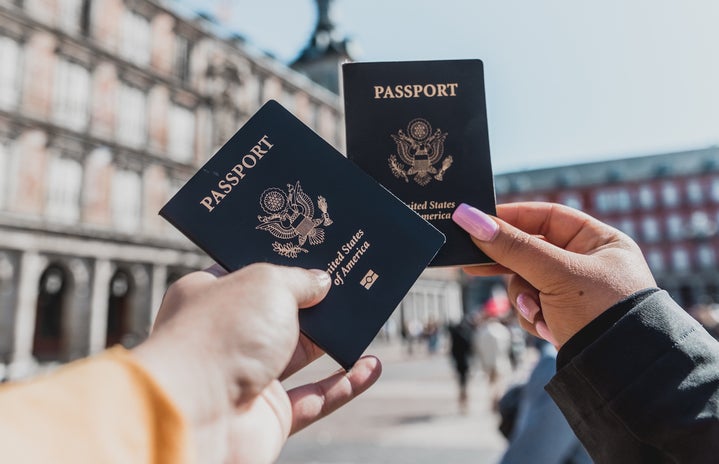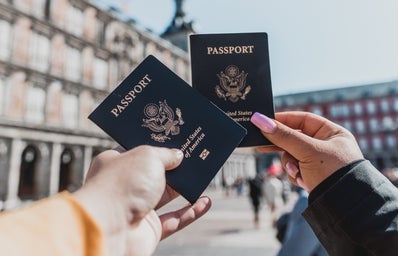If you ever have the opportunity to study abroad, I strongly urge, plead, beg you to travel to Budapest. Located in the heart of eastern Europe, Budapest is this strange fusion of history, innovation, city, country, identity, and culture. It’s laced with a hipster, drunken vibe of London but also retains the dense history and elegance of Athens. I have never seen any place quite like it. Within this weird pop-punk-meets-Bob-Ross vortex, you can find some of the most unique experiences of your time abroad. (Plus, it’s cheap!) Obviously, you have to start with the food. Downtown Pest hosts a daily market filled with some of the best Hungarian meats, cheeses, goulash, jewelry, furs, ornaments, and langos. Langos is found all over Budapest. It is deep-fried bread topped with sour cream and cheese and pairs perfectly with some mulled wine from huge, steaming barrels or Belgium hot chocolate. The locals are friendly and will even be happy to correct your pronunciation of the one Hungarian word you thought you knew, “köszönöm,” meaning “thank you.”
Only a couple minutes away, you can explore St. Stephen’s Basilica, whose bells can be heard throughout Pest on a quiet Sunday morning. Or, take a short trip across the river to Buda’s Castle Hill, where the Budapest Castle and Matthias Church overlook the entire city. This church was built as protection against the Mongol invasion and was even used for coronations by Hungarian kings. While some surrounding houses were torn down and repurposed during the communist occupation of Hungary, the locals fiercely defended Matthias Church, so it still sits proudly overlooking the city. Walking around downtown, you can’t miss the city’s massive parliament building, located right along the Danube River. When Hungary lost WWI, it surrendered massive amounts of its land to neighboring countries, leaving it only a third of its original size. Suddenly, Budapest was a landlocked, overpopulated, and oversized capital city of a small country. The parliament building exemplifies Budapest’s strange, unexpected elegance. The regal building seems out of a Disney movie and is even more enchanting at night. White House who?
Visiting the House of Terror will help you grasp why Budapest has communist pillars or seemingly random shrines to Ronald Raegan everywhere. The museum was constructed to pay tribute to the victims tortured and killed in that very building during Hungary’s fifty years of communist rule. During this time, people were brutally tortured for so much as whispering anything considered anti-communist or disparaging to the regime. Because it doesn’t allow photos except in the main room, it is a deeply immersive experience and will leave you feeling extremely grateful for freedom of speech. Budapest is littered with scars from its past. You can feel it trying to be better, to learn, to grow, and to heal with every new day. The most prominent scar is the city’s treatment of Jews during WWII. Having been promised by Hitler to regain its territories lost during WWI, Hungary sided with Germany in the war. This obviously sparked massive anti-semitic sentiments throughout the country, resulting in the shoes on the Danube River Bank. This line of shoes can be found right outside of the parliament building, a striking reminder to everyone who walks past the river of the tragedy that occurred there. During the winter of 1944-1945, many Jews were led to the edge of the river bank and ordered to take off their shoes, which they often hid valuables inside of during this time. They were then tied together in pairs of two, and one person was shot in the head, causing them to fall into the river and drag the other person with them, subsequently drowning them. This was done to save ammunition. The amount of shoes lining the bank, including baby shoes, is heartbreaking. Many Jews will place rocks (because they are more long-lasting than flowers) near or inside each pair to remember those killed. You can find the same rocks placed on the Weeping Willow sculpture outside of Budapest’s largest synagogue. The sculpture stands in front of a mass Jewish graveyard, in a district with a now-vibrant nightlife and youthful population. Only seventy years ago, starved bodies lined these same streets in the Jewish ghetto. It is this paradoxical relationship between new and old, birth and loss that makes Budapest so unique. It dissolves the boundaries between beauty and heartbreak, creating an almost-tangible gratitude for life. To stand on the Danube River Bank is an unforgettable humbling experience.
I hope that you find a hole-in-the-wall market like Szimpla Kert, have the best pancakes of your life at Grumpy, bathe with some Hungarians at 6 am, and learn how to say more than one word in Hungarian. Budapest will undoubtedly leave its mark on you, I promise.



